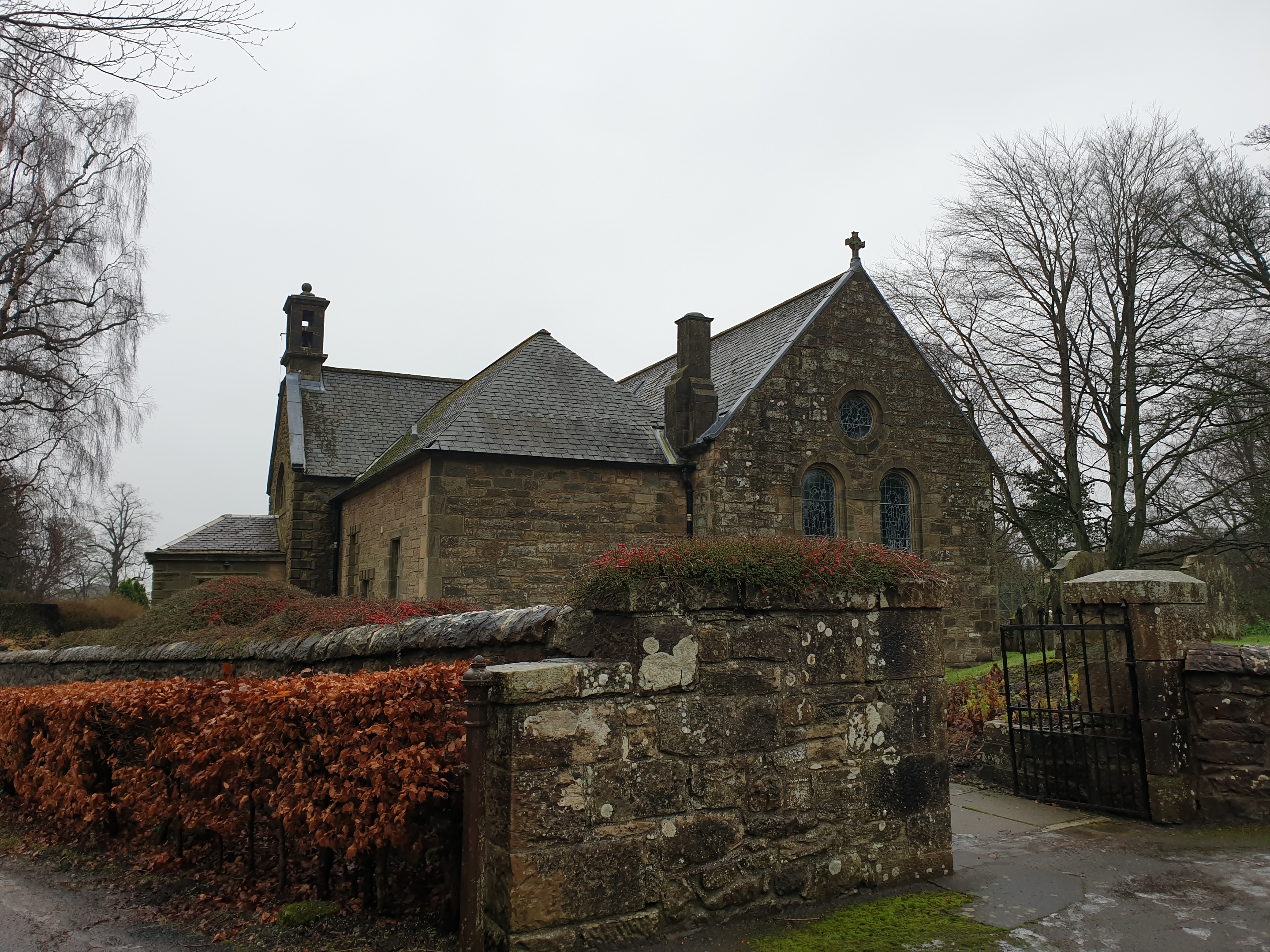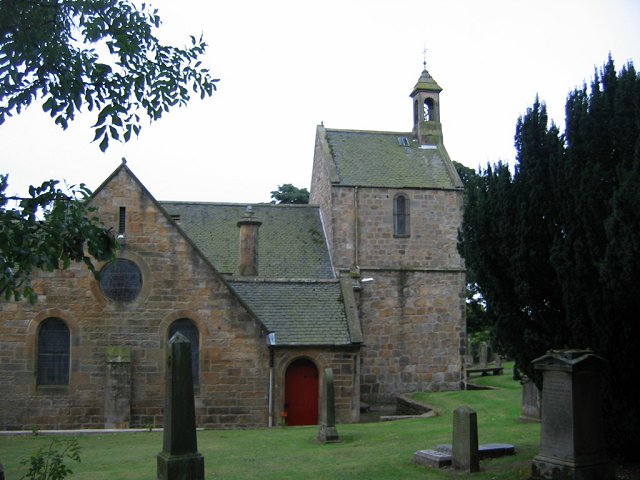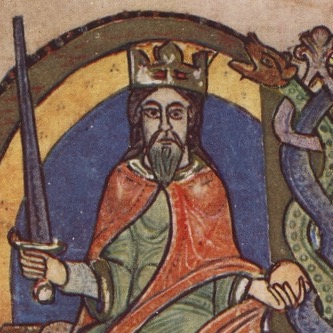|
Archdeaconry Of Lothian
The Archdeaconry of Lothian, located in modern-day Scotland, was a sub-division of the diocese of St Andrews, one of two archdeaconries within the diocese and in essence that part of the diocese which lay south of the River Forth, Forth. The Lothian archdeaconry was headed by the Archdeacon of Lothian, a subordinate of the Bishop of St Andrews. Organisation In the medieval period, the Archdeaconry of Lothian contained three deaneries: Linlithgow, Haddington, East Lothian, Haddington and The Merse, Merse. Deanery of Linlithgow Deanery of Lothian or Haddington Deanery of the Merse References * McNeill, Peter G.B. & MacQueen, Hector L. (eds), ''Atlas of Scottish History to 1707'', (Edinburgh, 1996) * Watt, D.E.R., ''Fasti Ecclesiae Scoticanae Medii Aevi ad annum 1638'', 2nd Draft, (St Andrews, 1969), pp. 309–14 * Archdeacons in Scotland, Lothian Lothian {{Scotland-stub ... [...More Info...] [...Related Items...] OR: [Wikipedia] [Google] [Baidu] |
Scotland
Scotland (, ) is a country that is part of the United Kingdom. Covering the northern third of the island of Great Britain, mainland Scotland has a border with England to the southeast and is otherwise surrounded by the Atlantic Ocean to the north and west, the North Sea to the northeast and east, and the Irish Sea to the south. It also contains more than 790 islands, principally in the archipelagos of the Hebrides and the Northern Isles. Most of the population, including the capital Edinburgh, is concentrated in the Central Belt—the plain between the Scottish Highlands and the Southern Uplands—in the Scottish Lowlands. Scotland is divided into 32 administrative subdivisions or local authorities, known as council areas. Glasgow City is the largest council area in terms of population, with Highland being the largest in terms of area. Limited self-governing power, covering matters such as education, social services and roads and transportation, is devolved from the Scott ... [...More Info...] [...Related Items...] OR: [Wikipedia] [Google] [Baidu] |
Duddingston
Duddingston ( sco, Duddiston) is a historic village in the east of Edinburgh, Scotland, next to Holyrood Park. Origins and etymology The estate wherein Duddingston Village now lies was first recorded in lands granted to the Tironensian monks of Kelso Abbey by David I of Scotland between 1136–47, Stuart Harris "The Place Names of Edinburgh". 1996. p.609 and is described as stretching from the Crag (from Craggenmarf, an old name for Arthur's Seat) to the Magdalene Bridge. Herbert, the first Abbot at Kelso granted the lands of Easter and Wester Duddingston to Reginald de Bosco for an annual rent of 10 merks. This land grant included the settlement known by the name of Treverlen or Traverlin, in the western part of it; this being the oldest known name of the village and estates that eventually became known as Duddingston. There are several possibilities for the etymology of "Treverlen": * "tref + gwr + lên" meaning "place of the learned man" * "tref + y + glyn" with lenition ... [...More Info...] [...Related Items...] OR: [Wikipedia] [Google] [Baidu] |
Ecclesmachan
Ecclesmachan (Gaelic: ''Eaglais Mhachain'') (Welsh: ''Eglwys Machan'') (NT058736) is an historic village in West Lothian. It lies just north of Uphall on the B8046 road. The village is notable for its medieval origin parish church. As at 2001, the population of the civil parish of Ecclesmachan was 529 and was 811 in 1991. History The name means 'church of Saint Machan', and is its form is thought to show that a church was present in the area in Sub-Roman times. However, it is not clear whether the name was coined in Gaelic or in the earlier Celtic language Cumbric (Old Welsh). Ecclesmachan parish church is medieval in origin and dates to the 13th century (consecrated in 1244), although it was extensively altered in the 18th century. The Building is Category B listed and retains an arched Norman style doorway. The Church was extended in 1710 and again in 1908, with a porch added. A date of 1710 is inscribed on one lintel.Buildings of Scotland: Lothian by Colin McWilliam The ... [...More Info...] [...Related Items...] OR: [Wikipedia] [Google] [Baidu] |
Torphichen
Torphichen ( ) is a historic small village located north of Bathgate in West Lothian, Scotland. The village is approximately 18 miles (20 km) west of Edinburgh, 7 miles (11 km) south-east of Falkirk and 4 miles (6 km) south-west of Linlithgow. The village had a population of 570 in the ( 2011 Census) and a population of 710 in 2016. Torphichen's placename may be Gaelic in origin, e.g., "Tóir Féichín" (the boundary/sanctuary of St Féichín), Tor Fithichean (Hill of the Ravens), or Brythonic "tref fechan" (little town). History The village (parish) church is said to have been founded by St. Ninian in about 400AD, a small wooden structure on the site of the present church (itself rebuilt in 1756). By the medieval period, the church and area had continued to develop and in 1165, the Knights Hospitaller of St. John made their Scottish headquarters at Torphichen and the Preceptory stands as testament to their presence. By 1756, part of the old structure of the Preceptory was alte ... [...More Info...] [...Related Items...] OR: [Wikipedia] [Google] [Baidu] |
Uphall
Uphall ( sco, Uphauch, gd, Ubhalaidh) is a village in West Lothian, Scotland. It is a swiftly growing village in a conurbation with Broxburn to the east, Dechmont to the west and the major town of Livingston to the south west. Uphall is 30 miles from Glasgow and 14 miles from Edinburgh in the Scottish Lowlands. Uphall Station and Pumpherston are separate villages that lie to the south of Uphall. Uphall has one primary school (Uphall primary school), several grocery stores, two cemeteries, a skatepark, football fields (King George Park), a golf course, a lawn bowls club (Middleton Hall) and a selection of public houses and hotels including the Volunteer Arms, Dovehill Arms, Oatridge Hotel and Houston House Hotel. History Uphall was historically a small settlement known as Wester Strathbrock (from the Gaelic "Srath Bhroc" meaning valley of the badgers), with its neighbour Broxburn being named Easter Strathbrock. The parish was centered around Strathbrock Castle (a Motte-and-bai ... [...More Info...] [...Related Items...] OR: [Wikipedia] [Google] [Baidu] |
Midcalder
Mid Calder ( sco, Mid Calder; gd, Caladar Mheadhain) is a village in West Lothian, Scotland. It is located on a steep hill overlooking the River Almond and Calder Wood, around west of Edinburgh. The settlement has been on a major crossroads since its origin some time in the 11th century. History In the 14th century, during the Wars of Scottish Independence, Sir James de Sandilands distinguished himself in the wars against the English. For his services he was rewarded with a royal charter of his lands by David II of Scotland. James was well connected and married Eleanor, the only daughter of Sir Archibald Douglas, Regent of Scotland. The gift included extensive estates in what is now West Lothian, and the Barony of Calder. After the Reformation in 1560, Sir James Sandilands, the head of the Sandilands family, was created Lord Torphichen. Since 1348 the family seat has been at Calder House, near to the middle of the village. For centuries a large part of the economy of ... [...More Info...] [...Related Items...] OR: [Wikipedia] [Google] [Baidu] |
East Calder
East Calder is a village located in West Lothian, Scotland, about a mile east of Mid Calder and a mile west of Wilkieston. It forms part of 'the Calders (together with Mid and West Calder), three small neighbouring communities situated west of Edinburgh and south of the "New Town" of Livingston. Its fast growth rate in the early 21st-century is driven by its being within easy commuting distance of Livingston, Edinburgh and Glasgow, combined with its close position relative to the principal transport arteries of the M8 motorway, the A89 and A71 roads, the Edinburgh – Glasgow railway line (the Shotts Line), and Edinburgh Airport. The East Calder Gala is a local highlight held every June, dating back to 1919. Geography East Calder lies in the lee of the Pentland Hills within the Almond River Valley, near the right bank of the river, and specifically in the East Calder / Livingston / Broxburn Plain, a ''Lowland Plains'' type landscape. Given its location on top of a natural ... [...More Info...] [...Related Items...] OR: [Wikipedia] [Google] [Baidu] |
Kirknewton, West Lothian
Kirknewton ( sco, Kirknewtoun, gd, Eaglais a' Bhaile Ùir) is a village formerly in the county of and, since 1975, in , Scotland. The population of the Kirknewton Community Council district is 2200, which includes the village and surrounding areas. It lies south of the A71 from |
Ratho
Ratho ( gd, Ràthach) is a village in the Rural West Edinburgh area of Edinburgh, Scotland. Its population at the 2011 census was 1,634 based on the 2010 definition of the locality. It was formerly in the old county of Midlothian. Ratho Station, Newbridge and Kirkliston are other villages in the area. The Union Canal passes through Ratho. Edinburgh Airport is situated only 4 miles (7 km) away. The village has a high ratio of its older houses built from whin stone due to a whin quarry nearby. The older, historical, part of the village was designated a Conservation Area in 1971 by Midlothian County Council. Origins Ratho appears in written records from 1243 with various spellings such as Rath (ewe, eu, ew, ow, au) but most consistently, from 1292, with its present name Ratho. Other places nearby having "Ratho" in their names include Ratho Byres, Ratho Park and Ratho Bank (now named Ashley). It is believed that the name Ratho comes from ''Rath'', Scottish Gaelic, for a p ... [...More Info...] [...Related Items...] OR: [Wikipedia] [Google] [Baidu] |
Colinton
Colinton ( gd, Baile Cholgain) is a suburb of Edinburgh, Scotland situated south-west of the city centre. Up until the late 18th century it appears on maps as Collington. It is bordered by Dreghorn to the south and Craiglockhart to the north-east. To the north-west it extends to Lanark Road (the A70) and to the south-west to the City Bypass. Bonaly is a subsection of the area on its southern side. Colinton is a designated conservation area. History Originally sited within a steep-sided glen on a convenient fording point on the Water of Leith, and expanding from there, Colinton's history dates back to before the 11th century. Close to the Water of Leith is Colinton Parish Church, correctly called St Cuthbert's Parish Church, which was founded as the Church of Halis (Hailes) around 1095 by Elthelred, third son of Malcolm III and Queen Margaret. The current exterior largely dates from 1907 but the structure dates from 1650. The entrance is marked by a lych gate, rare in ... [...More Info...] [...Related Items...] OR: [Wikipedia] [Google] [Baidu] |
Gogar, Edinburgh
Gogar is a predominantly rural area of Edinburgh, Scotland, located to the west of the city. It is not far from Gogarloch, Edinburgh Park and Maybury. The Fife Circle Line is to the north. Etymology The name of Gogar first appears in a clearly datable context in 1233. The etymology is uncertain. It may be derived from "cog" or "gowk", a Scots term for cuckoo, a bird with known ritual significance in ancient times, or from the Brythonic term for red, "coch" (cf "''Red'' Heughs" in the vicinity). The name also appears as a compound in several places in the area, notably Gogarloch named after the drained Gogar Loch; Gogarburn, Gogarbank, Gogarstone and Castle Gogar. Prehistory and archaeology In 2008, in advance of the construction of the Edinburgh tram line archaeological work was undertaken by GUARD Archaeology to the west of Gogar Mains. The archaeologists discovered a range of features and structures that date from the Neolithic to the Early Middle Ages. The Neolithic fi ... [...More Info...] [...Related Items...] OR: [Wikipedia] [Google] [Baidu] |
St Cuthbert's Church, Edinburgh
The Parish Church of St Cuthbert is a parish church of the Church of Scotland in central Edinburgh. Probably founded in the 7th century, the church once covered an extensive parish around the burgh of Edinburgh. The church's current building was designed by Hippolyte Blanc and completed in 1894. St Cuthbert's is situated within a large churchyard that bounds Princes Street Gardens and Lothian Road. A church was probably founded on this site during or shortly after the life of Cuthbert. The church is first recorded in 1128, when David I of Scotland, David I granted it to Holyrood Abbey. At that time, the church covered an extensive parish, which was gradually reduced until the 20th century by the erection and expansion of other parishes, many of which were founded as Chapel of ease, chapels of ease of St Cuthbert's. St Cuthbert's became a Protestant church at the Scottish Reformation in 1560: from after the Reformation until the 19th century, the church was usually called the West ... [...More Info...] [...Related Items...] OR: [Wikipedia] [Google] [Baidu] |









